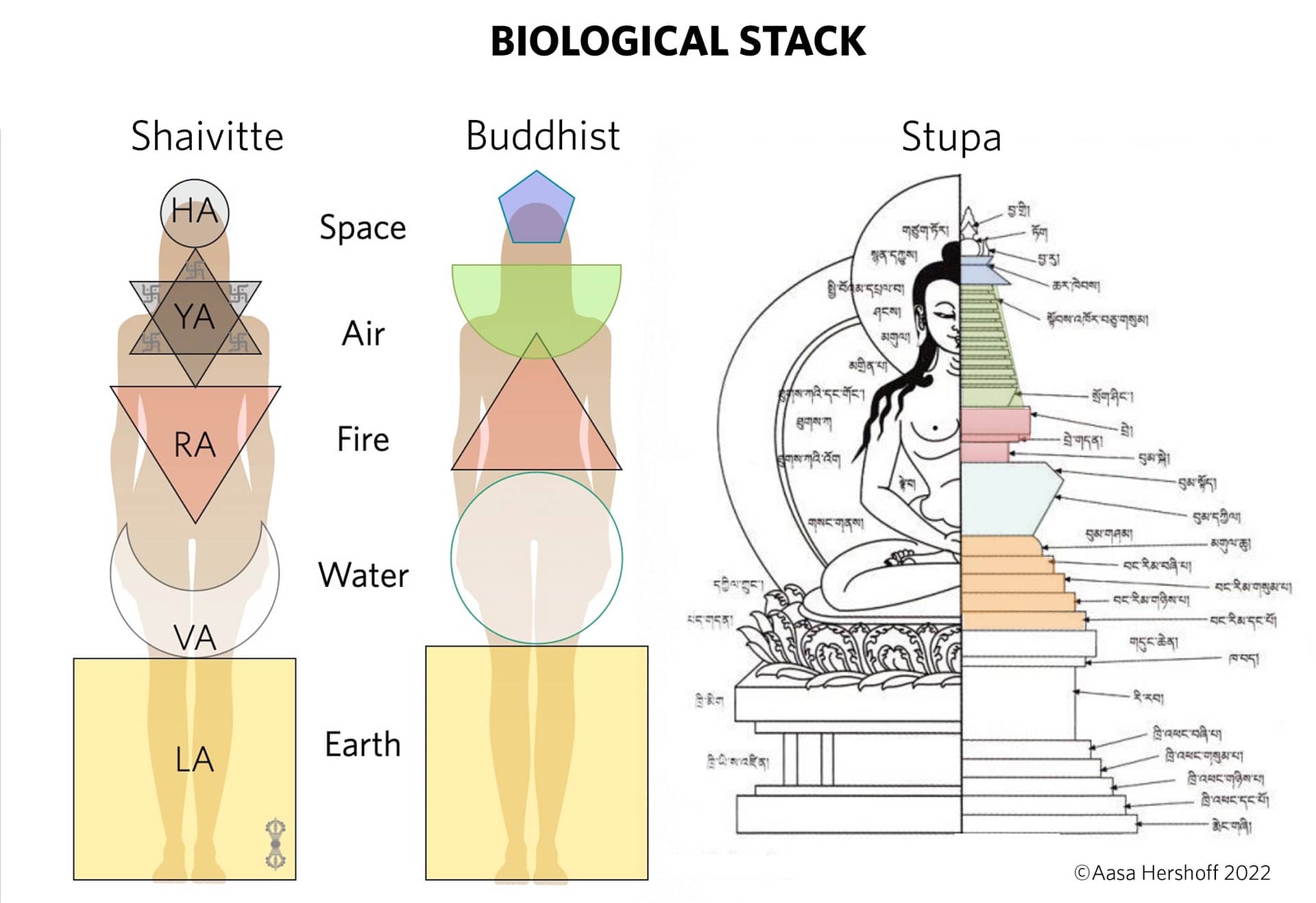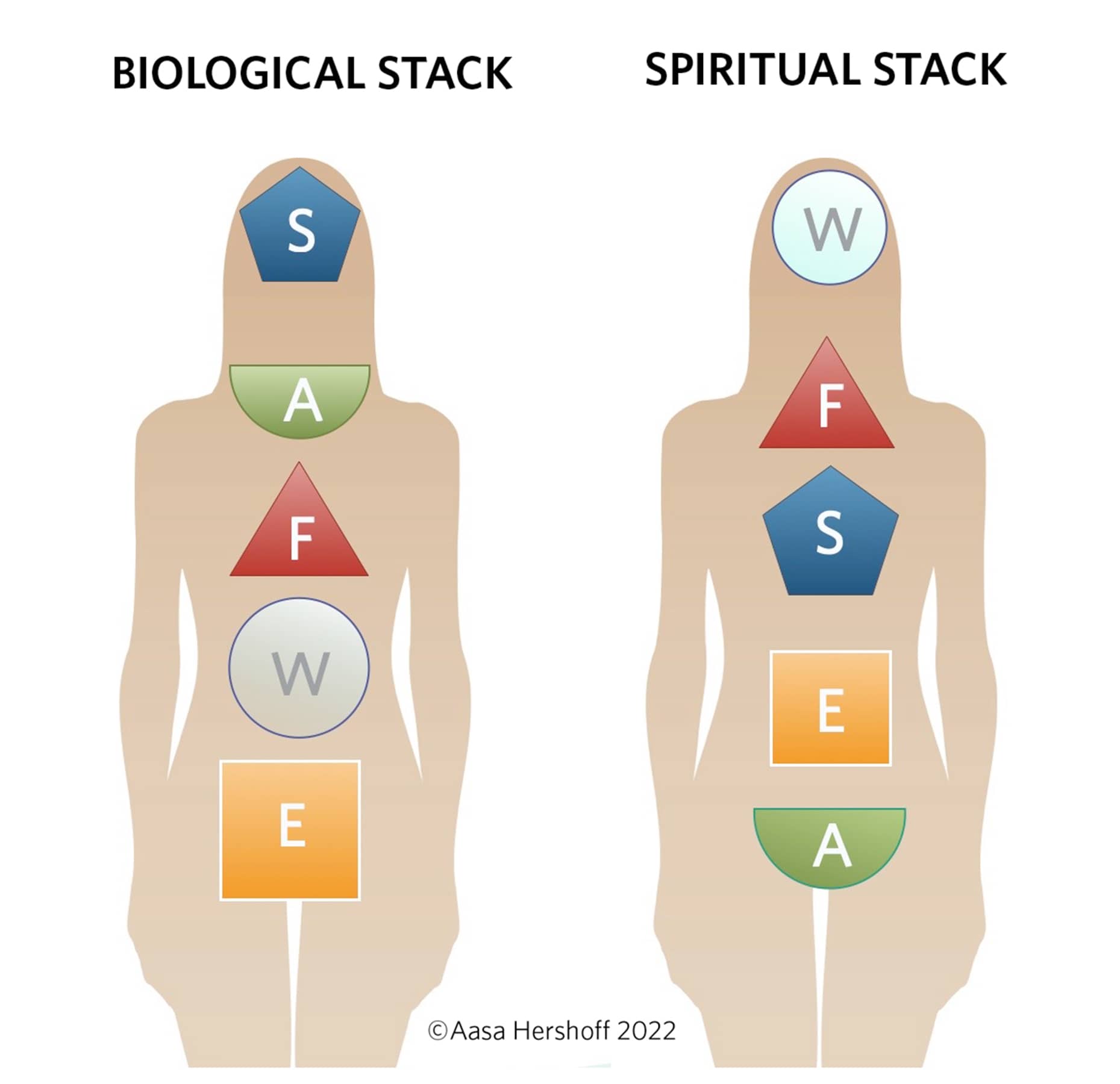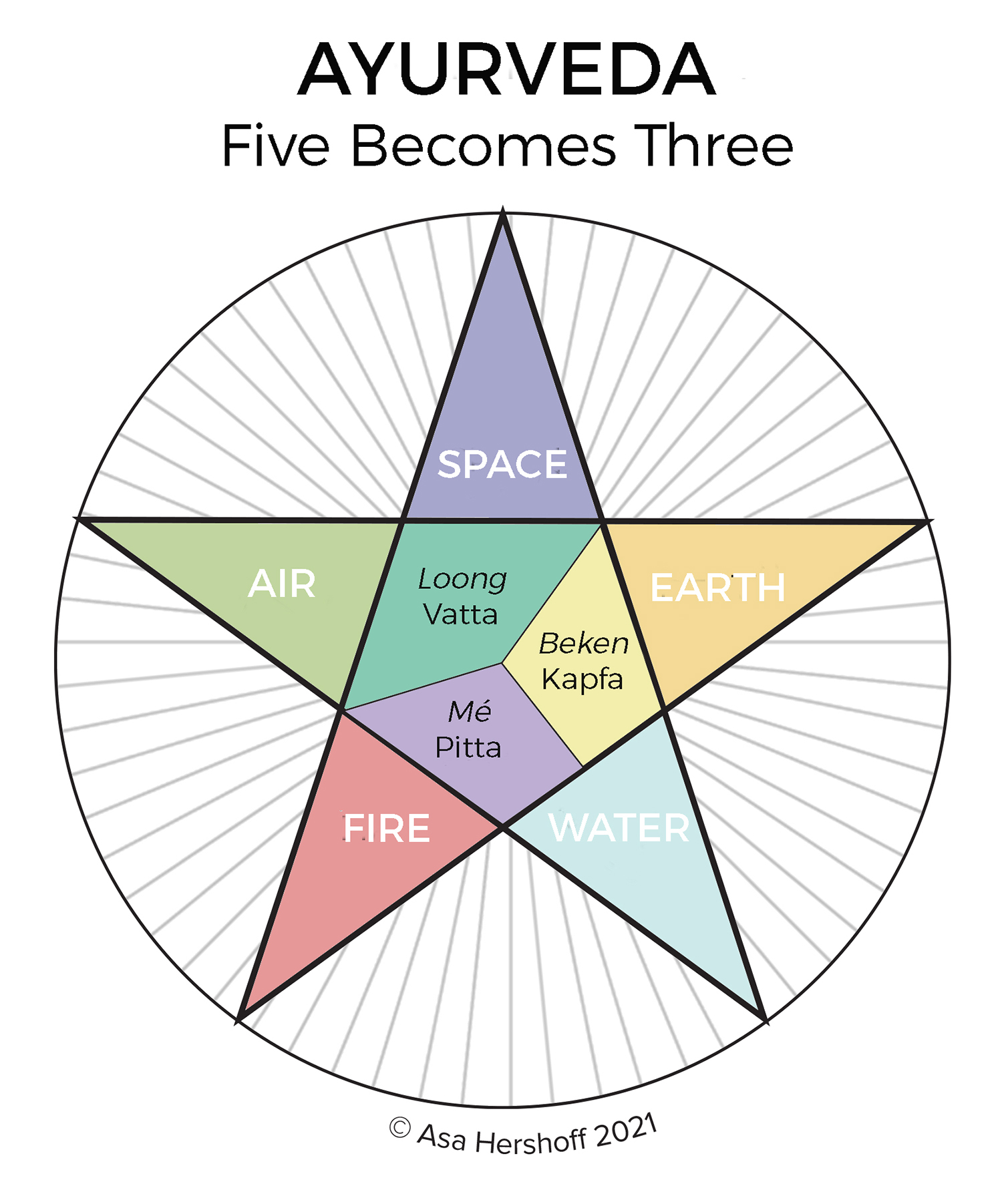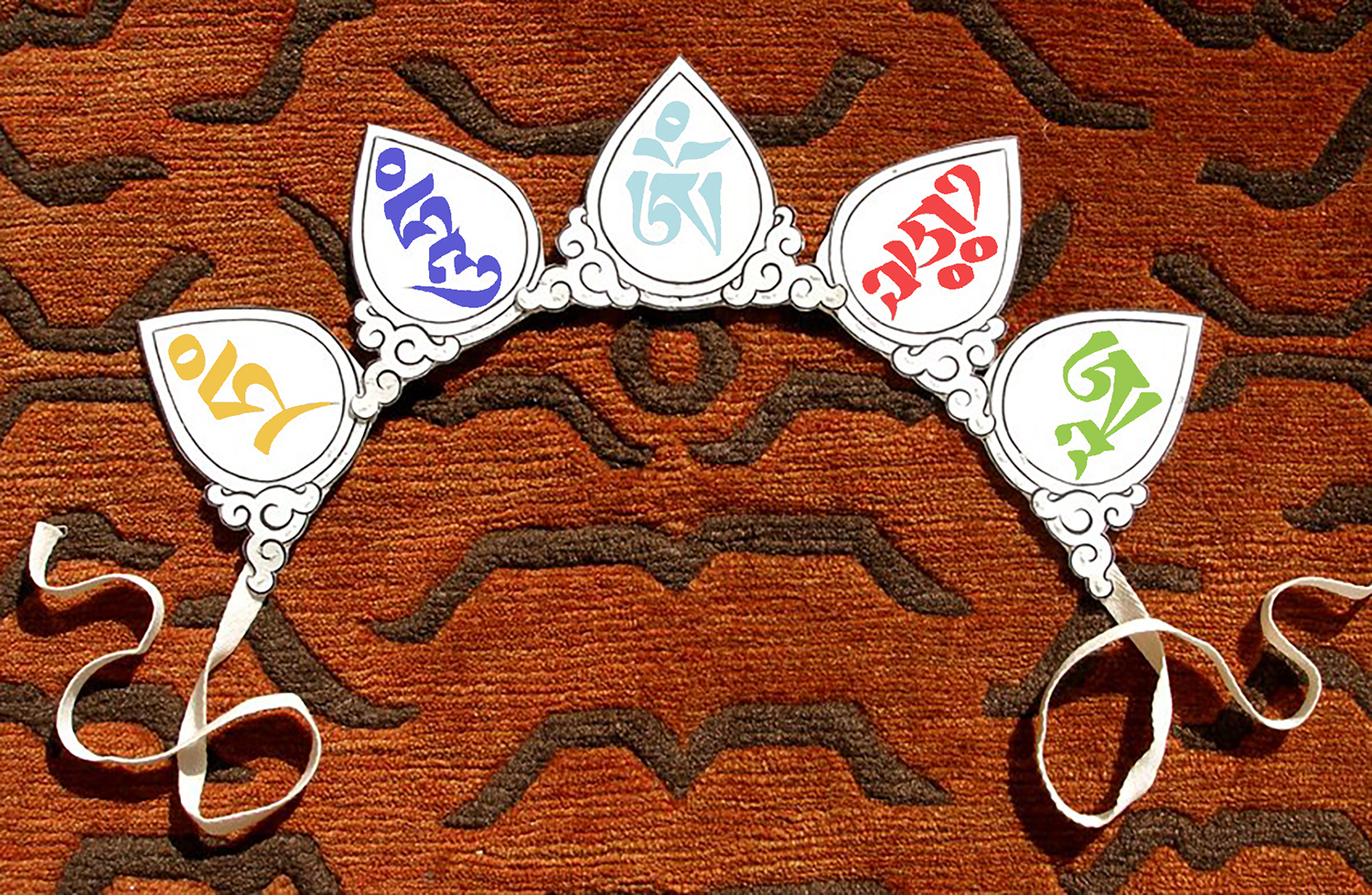 If you were born in a Buddhist country, or if you are a Western student new to this religion, one of the very first things you will learn is the concept of reincarnation. And as an intrinsic part of that concept, the ideas of samsara of karma follow in its train. And as Tibetan Buddhist or Vajrayanist, there is the associated teaching of the six realms of being in which we wander endlessly, cycling birth after birth until we liberate ourselves from different forms of interminable suffering. But that is not the only game in town. As stated in the voluminous Encyclopedia of Reincarnation and Karma. it is surprising “how little real agreement there is on them across a very broad range of writings” on exactly what is going on here. Indeed, it was traditionally five realms within Buddhism. Hindu cosmology of the eternal soul traveling from one body go back to the Upanishads, some 1000 B.C., while Jainism has four possible pathways of instantaneous rebirth (enlightenment, human form, animals or hell). The ancient Orphic religion of Greece from the 6th century B.C. taught that one continues to be reborn as human and animal until, with the help of the gods, one perfects their being. Pythagoras and later Plato famously taught how souls transmigrate from one embodiment to the next. The ancient Greeks had their notions too. The Romans, Druids and Celts, the Kabbalists, the middle Eastern Druze and Yezidis. Indeed the variety of ideas around reincarnation on a global scale, just like the concept of heaven and hell, are a fascinating study, though leaving the water further muddied.
If you were born in a Buddhist country, or if you are a Western student new to this religion, one of the very first things you will learn is the concept of reincarnation. And as an intrinsic part of that concept, the ideas of samsara of karma follow in its train. And as Tibetan Buddhist or Vajrayanist, there is the associated teaching of the six realms of being in which we wander endlessly, cycling birth after birth until we liberate ourselves from different forms of interminable suffering. But that is not the only game in town. As stated in the voluminous Encyclopedia of Reincarnation and Karma. it is surprising “how little real agreement there is on them across a very broad range of writings” on exactly what is going on here. Indeed, it was traditionally five realms within Buddhism. Hindu cosmology of the eternal soul traveling from one body go back to the Upanishads, some 1000 B.C., while Jainism has four possible pathways of instantaneous rebirth (enlightenment, human form, animals or hell). The ancient Orphic religion of Greece from the 6th century B.C. taught that one continues to be reborn as human and animal until, with the help of the gods, one perfects their being. Pythagoras and later Plato famously taught how souls transmigrate from one embodiment to the next. The ancient Greeks had their notions too. The Romans, Druids and Celts, the Kabbalists, the middle Eastern Druze and Yezidis. Indeed the variety of ideas around reincarnation on a global scale, just like the concept of heaven and hell, are a fascinating study, though leaving the water further muddied.
Choosing Concepts
Like many in the West, I adopted the Buddhist concept for some time, a novel and fascinating idea for a Jewish boy from the Toronto suburbs. But increasingly all of these ideas seems “New Agey” long before the term New Age was coined. This idealized idea of life as a school, provided exclusively for one’s edification, seemed contrived. Similar to image of a benevolent old man with a white beard (or an angry, strict one if you are a Jew) waiting to usher good little boys and girls into heaven, it seems similarly unnatural. All such narratives are excellent for exoteric religion, providing reassurance and comfort in a violent and uncertain world. Christianity and Buddhism, in spite of wars fought in their name, are civilizing influences, offering a moral code of kindness, compassion, charity, service towards others and the like. Both the strange marriage of early Christianity with Roman law and governance, and the Tibetan merging of monasticism with yogic mysticism, remain problematic to this day. Nonetheless, religious ethics help pacify and uplift suffering humanity, with both grains of truth about who we are and how we should act, and a good mythology to support these guides to a better way of life.
However, there is nothing in the natural world, the one we experience day to day, that conforms this kind of “free ride” travel from life to life. And, when in my 20’s, I came across the profound Gnostic reincarnation teachings of G. I. Gurdjieff, it struck a chord deep in my soul. It is just common sense after all. Our evolution, transformation, the possibility of a secondary light body creation, is not guaranteed, any more than an acorn falling on the ground is guaranteed to become a might oak. Only one in 10,000 acorns may become a tree, and many will not survive the first one or two years. Of the one hundred million sperm in an ejaculation, only one can become the seed of a new child. And one in two million people will turn out an IQ of 180! We are not acorns, but things in nature do not stack up very well for the average blade of grass. In the Gurdjieffian postulation, reincarnation, like Light Body, is not a given. It is a hidden potential that is only rarely realized. In order to attain this rather lofty goal, the individual must have done the spiritual work that is necessary, have met some real adepts, learned much, studied much, practiced in various specifically formulated ways.
Crystallization
From the perspective of spiritual physics, we need to produce very specific substances in our body, and reorganize our entire energetic and biophotonic matrix. In other words, we have to be stream-winners, on the path towards transformation—light body adolescents or infants at a minimum. j. G. Bennett spoke of two kinds of people in this world, the great major of psychostatic individuals for whom life is just birth, old age and death, and the psychodynamic who become something different, something meta-human. They are mundane people and seekers, who may one day become adepts themselves, the oldest game in human evolution. In is odd, and a great omission, that all the teachings about Light Body or rainbow body formation in Asian traditions only seem to speak about the end-product. Very little or nothing is said about the actual process itself, what happens along the (very long) way. And what degree, what actually percentage of re-crystallization is needed before one does not fall back into ones purely biological form. What threshold specifically, is required for something within oneself to reincarnate one’s consciousness. If nothing whatever is developed, if a man or woman dies just as they were born, they will be recycled. Earth to Earth, fire to Fire, air to Air, planetary and solar energies back to their source, etc. Bennett talks about the “soul pool stuff,” the place where the spiritual substance which animates one’s being will return to its source. Gurdjieff further maintains that the death of an individual releases energy that helps “feed the moon” in its unstable orbit. Spiritual practitioners actually feed the planets and moon through their spiritual work, whether this is consciously done or not. Whether allegorical or true, it is a process on a cosmic scale, not just individual. The above may seem like flights of fantasy, more mental sophistry, theorizing and philosophical self-entertainment. Fortunately, having spent the better part of fifty years involved with intuitive or empathic healing work on many thousands of individuals, there is some possibility of answers, at least some that have satisfied both my curiosity and clarify the path.
The Thirty Percent Rule
The average person has only a fifteen percent organized bioenergetic or astral field. This happened biologically, as a natural part of living. It is slightly less in children and increases with age, but nothing is guaranteed by biology beyond that basic fifteen percent. Some have less, others a bit more due to individual personality, experiences, intelligence, genetics, and the infinity of life’s challenges and opportunities. But these differences remain small if solely under the influence of the rule of fate, luck or accident. For those who have had a strong spiritual predilection, even since childhood, they will often have felt “different” their whole lives. Others may have an “awakening,” a life-altering event or realization that totally changes their life direction. In either case, an internal magnetic center will forever, and unforgivably, drive them towards a higher level of vibration. Whatever the beginnings, once one has broken through the glass ceiling where their bioenergetic and magnetic fields have re-organized and crystallized in a specific way, then consciousness has a the possibility of entering a subsequent birth to continue that evolution. This progression is a story for another time, as their is much more to the stages of light body creation than is generally understood or taught. And we must realize that this remarkable privilege of being able to go forward and continue our transformative process it itself no guarantee of some future resolution. Nothing is certain in the physical world filled with happenstance, negativity and human madness. But with continued reliance on a solid spiritual lineage and our internal diligence, there is great hope. And yet the vast fields of humanity that merely live and expire like the poppies of the field will be the benefactors of such a unique occurrence. The conscious cosmic ensemble of planets and suns that pervade our world will be also the recipient of those benefits, for we puny beings are part of a grand schema. The earth needs the acorn to become trees, though many must fall by the wayside, while fortunate others find rich fallow ground.
References
Atkinson, W. W. (1908). Reincarnation and the Law of Karma: A History of Reincarnation Beliefs in Judaism, Hinduism, Christianity, Buddhism and Other Religions. London: Yogi Publication Society.
Bhikkhu Analayo. (2018). Rebirth in Early Buddhism and Current Research. Boston, MA: Wisdom Publications.
Gurdjieff, G. I. (1992). All and Everything: Beelzebub’s Tales to His Grandson. New York, NY: Jeremy Tarcher.
Luchte, J. (2009). Wandering Souls: The Doctrine of Transmigration in Pythagorean Philosophy. London, UK: Bloomsbury Publishing.
Mann, A. T. (1995). Elements of Reincarnation. Dorset, Great Britain: Element Books.
McClelland, N. C. (2010). Encyclopedia of Reincarnation and Karma. Jefferson, N.C: McFarland & Company.
Ouspensky, P. D. (1957). In Search of the Miraculous: Fragments of an Unknown Teaching. London: Routledge & Kegan Paul.
Thondup, T. (2011). Incarnation: The History and Mysticism of the Tulku Tradition of Tibet. Boulder, CO: Shambala.
Zivkovic, T. (2013). Death and Reincarnation in Tibetan Buddhism: In-Between Bodies. London, UK: Routledge.
 The Buddhist chakras, except for a few specific tantras, are described as five in nature. You would naturally expect them to stack up according to their hierarchy, their density, their sequential refinement, just as in the Shaivite approach and their hapless inheritor, the Western New Age chakra system. After all, that is how humans seem to be built. The vertical stack of human anatomy is our natural, biological makeup as our form and function span the gamut, from earth to sky. The stupa or sacred reliquary, found all over the East and especially in Tibet and Japan, echo this arrangement. Below is Earth, then Water, Fire, Air and finally Space. We are installing these elements in the chakras via color, shape, deity, seed syllable and so on. We are fusing a biological stack, the way that chakras exist naturally within us, with an intentional placement of universal forces.
The Buddhist chakras, except for a few specific tantras, are described as five in nature. You would naturally expect them to stack up according to their hierarchy, their density, their sequential refinement, just as in the Shaivite approach and their hapless inheritor, the Western New Age chakra system. After all, that is how humans seem to be built. The vertical stack of human anatomy is our natural, biological makeup as our form and function span the gamut, from earth to sky. The stupa or sacred reliquary, found all over the East and especially in Tibet and Japan, echo this arrangement. Below is Earth, then Water, Fire, Air and finally Space. We are installing these elements in the chakras via color, shape, deity, seed syllable and so on. We are fusing a biological stack, the way that chakras exist naturally within us, with an intentional placement of universal forces.












 Five Becomes Three
Five Becomes Three The Road Beyond this Life
The Road Beyond this Life
